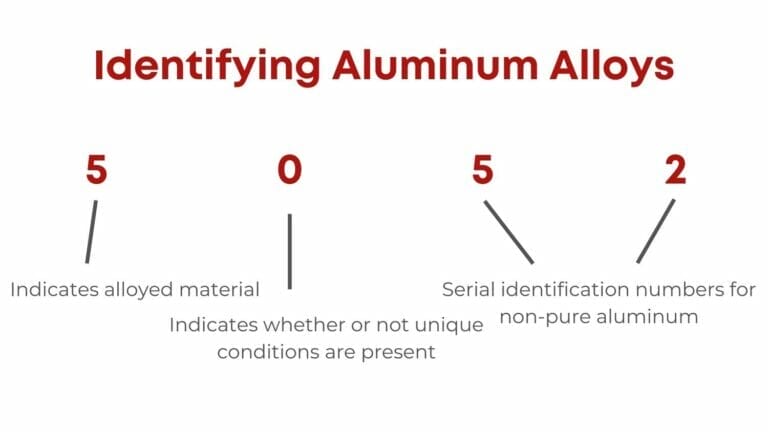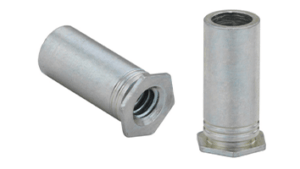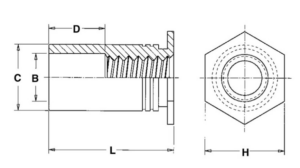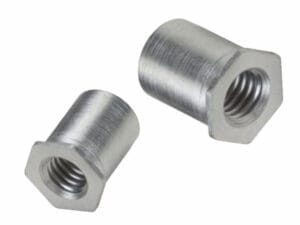Alloyed metals are typically stronger, more durable, and higher quality than their commercially pure counterparts. SendCutSend offers several steel and aluminum alloys with a spectrum of values and applications. This article will walk you through identifying alloyed metals, and the aluminum alloys that SendCutSend offers for laser cutting.
Identifying aluminum alloys
Alloyed metals are indicated using a 4-digit identification system. Each digit represents a different aspect of the alloy and is typically written in front of the original pure metal for clarity (e.g. 1095 High Carbon Steel, 5052 Aluminum). This article specifically covers the most common aluminum alloys, so we’ll only be showing how to read the 4-digit identification system for aluminum alloys. The digits denote different things if it’s a steel or other kind of alloy.
The first digit represents the main alloying element.
- “1” indicates there are no alloyed elements and it’s pure aluminum
- “2” indicates copper
- “5” indicates magnesium
- “6” indicates magnesium and silicon
- “7” indicates zinc
- “8” is reserved for all other alloying agents
We also use these numbers to identify whole series of aluminum alloys. For example, knowing that “2” indicates copper, we would refer generally to aluminum-copper alloys as “2xxx series.”
The second digit indicates any special alloying conditions and whether or not the alloy has been modified from its original state. If the digit is “0,” no unique modifications or conditions are present. This is the case with most commonly used aluminum alloys.
The third and fourth digits are used to serialize and identify individual alloys. If it’s a 1xxx series (a pure aluminum alloy with at least 99% aluminum), the last two digits indicate the minimum aluminum percentage above 99%. For example, 1060 aluminum has to be made up of at least 99.60% pure aluminum.

2024 T3 Aluminum
Laser cut 2024 T3 Aluminum is the only aluminum alloy SendCutSend offers that is alloyed with copper. Copper is what gives this aluminum its high tensile strength, elasticity, and yield strength.
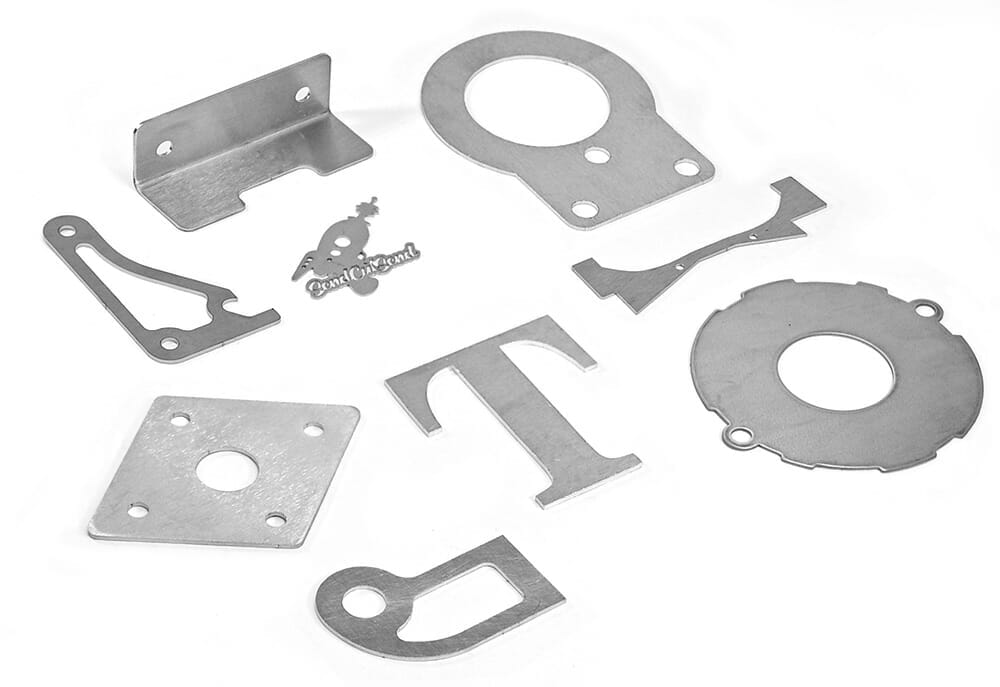
Pros of 2024 Aluminum
The tensile strength of 2024 Aluminum is unmatched thanks to the presence of copper, as well as the fatigue resistance. These advantages allow 2024 to withstand high stress and pressure environments better than other aluminum alloys, making it an ideal material choice for aircraft paneling, military vehicle applications, and structural construction parts.
Cons of 2024 Aluminum
While copper provides a number of advantages, it can compromise some aspects of the pure aluminum when they’re alloyed. Aluminum is known for its corrosion resistance, which typically lends itself to aluminum’s many marine environment applications. However, when alloyed with copper, much of that corrosion resistance is lost, making 2024 less suitable for use in highly corrosive environments.
2024 Aluminum Uses
- Aerospace industry paneling
- Combat robotics
- High pressure cylinders
- Automotive engine parts
- Military vehicles and tactical gear
5052 Aluminum
Laser cut 5052 Aluminum is a staple material and the standard go-to metal for dozens of industries. Alloyed with magnesium, 5052 is highly corrosion resistant, easy to work with, and has one of the best strength-to-weight ratios for its affordable price.

Pros of 5052 Aluminum
5052 aluminum is favored for its affordability and workability. Due to the fact that it is not heat treated, 5052 is more suited than other aluminum alloys to forming, especially in sheet metal form. This means it’s easy to bend, roll, and tap sheet 5052 aluminum, allowing you to design an endless number of unique parts without worrying about forming difficulties. 5052 also contains another secondary element, which is chromium. The presence of chromium in the alloy further prevents 5052 aluminum from corroding, lending 5052 to even more marine environment applications than other corrosion-resistant materials.
Cons of 5052 Aluminum
5052 aluminum cannot be heat-treated to increase its strength. As a result, it is weaker than higher-strength aluminum alloys such as 6061 and 7075. Of the most commonly used aluminum alloys, 5052 also has one of the lowest levels of thermal conductivity, making it less suited for heat dissipation applications.
5052 Aluminum Uses
- Motor mounts
- Flooring panels
- Boating panels and parts
- Electrical enclosures/boxes
- Fencing
6061 T6 Aluminum
Laser cut 6061 T6 Aluminum is alloyed with both magnesium and silicon, strengthening the aluminum in ways that have helped make it one of the most widely used alloys in many industries. It’s heat-resistant, has high fatigue strength, and is favored for its weldability.
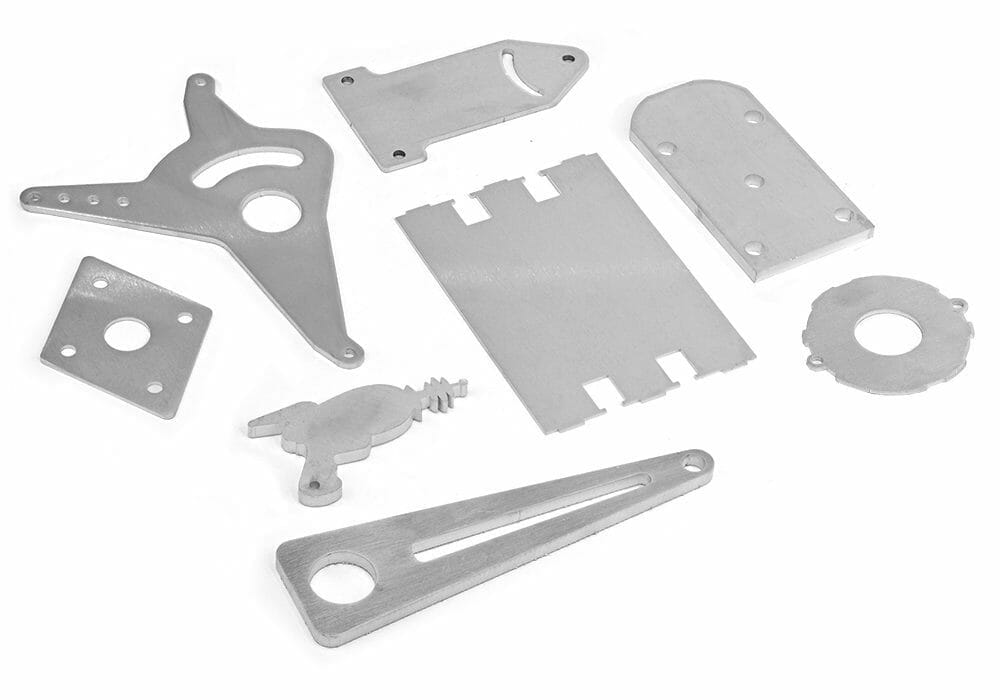
Pros of 6061 Aluminum
Magnesium and silicon together in 6061 Aluminum create magnesium-silicide, which allows 6061 to go through a heat-treatment process called precipitation hardening. This process strengthens the alloy while maintaining its weldability. The increased fatigue strength gives the 6061 impact resistance, making it ideal for high-impact and high vibratory environments, such as those found in the aerospace and automotive industries.
Cons of 6061 Aluminum
Because 6061 Aluminum is heat treated, it loses some of the formability that other aluminum alloys boast. 6061 has a tendency to crack and warp during the bending and tapping process, so it’s not the best candidate for more complicated designs that require additional forming.
6061 Aluminum Uses
- Precision robotics
- Transportation
- Infrastructure (buildings, bridges, etc.)
- Welded furniture
- Heat exchangers
7075 Aluminum
Alloyed with zinc, laser cut 7075 aluminum has the highest tensile strength of any of the aluminum alloys SendCutSend offers. Its sturdiness, strength, and durability make 7075 one of the most impressive and high quality of the aluminum alloys.

Pros of 7075 Aluminum
The presence of zinc in 7075 increases the tensile strength exponentially. It also allows for precipitation hardening, increasing the shear strength of the material. 7075 is also light-weight and has a strength-to-weight ratio unparalleled by other alloys. This lends itself to applications where strength is of the utmost importance, and the weight budget is low. Everything from the cycling industry to military defense development utilizes 7075 aluminum in their projects.
Cons of 7075 Aluminum
Similar to 2024 T3 Aluminum, 7075 has low corrosion resistance when compared to other aluminum alloys. It’s less suited for corrosive environments or applications in which there will be extreme weathering. 7075 is also one of the most costly aluminum alloys, making it less suitable for a wider range of projects since it’s not cost effective. (Check out our blog post on maximizing your budget for laser cut sheet metal parts to learn what materials you should substitute for cost effectiveness.)
7075 Aluminum Uses
- Bicycle frames
- Worm gears
- Aircraft wing panels
- Structural beams
- Rock climbing equipment
Picking the Aluminum Alloys That Are Best For You
Alloying other metals with raw aluminum makes a stronger, better material with a variety of uses and strengths. Choosing the right alloy for your projects is one of the most important aspects of designing a successful part. Be sure to read each alloy’s individual information page to make sure you are selecting the material that best fits your needs.
Once you’re ready, upload your design and get an instant quote today! We ship most standard orders out the door within 2-4 business days.
